Five days ago I spent about 40 minutes with a male Belted Kingfisher who even cooperated occasionally. These are some of the events I photographed that morning.
Today’s post is longer on photos than it is on words. Sometimes I’m just too verbose.
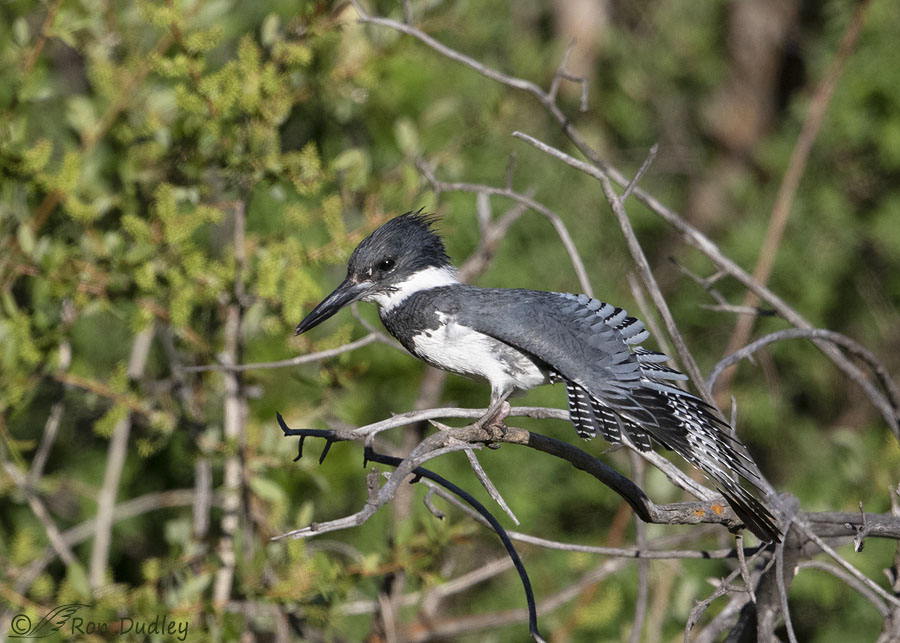
1/5000, f/6.3, ISO 800, Canon 7D Mark II, Canon EF 500mm f/4L IS II USM + EF 1.4 III Extender, not baited, set up or called in
A wing and tail stretch followed by a…
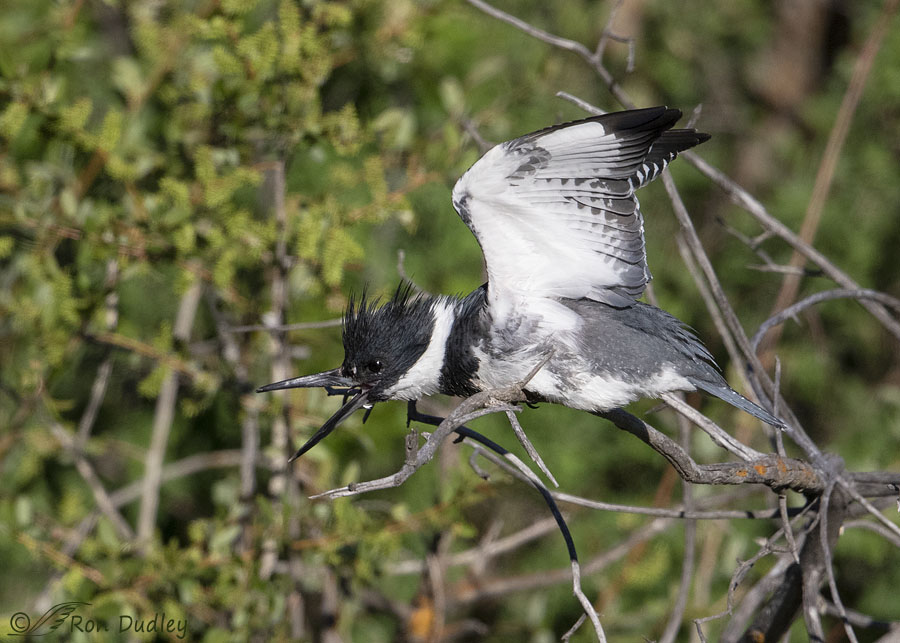
1/5000, f/6.3, ISO 800, Canon 7D Mark II, Canon EF 500mm f/4L IS II USM + EF 1.4 III Extender, not baited, set up or called in
vertical wing stretch. I know, it looks like he’s swallowing a twig and pooping a stick.
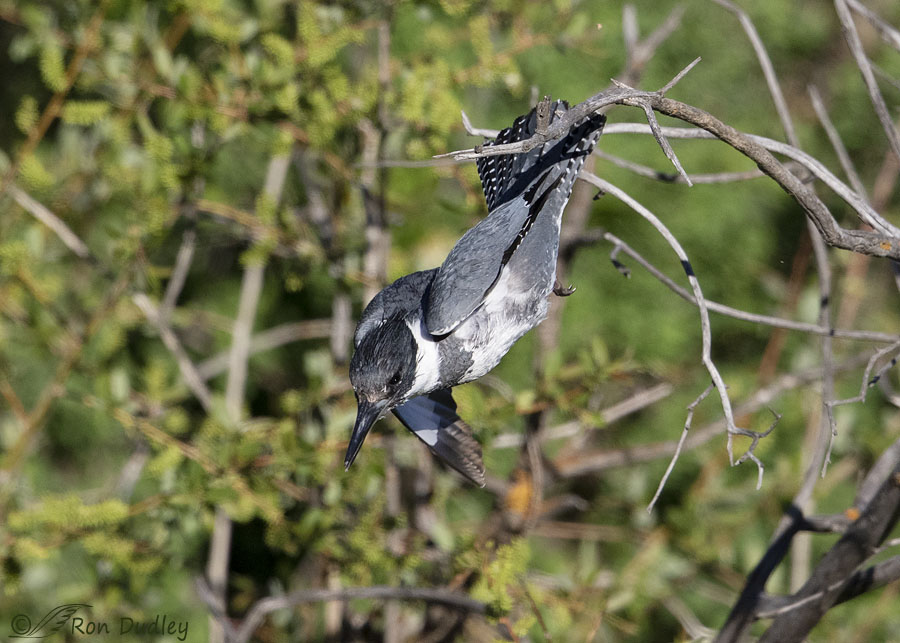
1/4000, f/6.3, ISO 800, Canon 7D Mark II, Canon EF 500mm f/4L IS II USM + EF 1.4 III Extender, not baited, set up or called in
A dive on a fish.
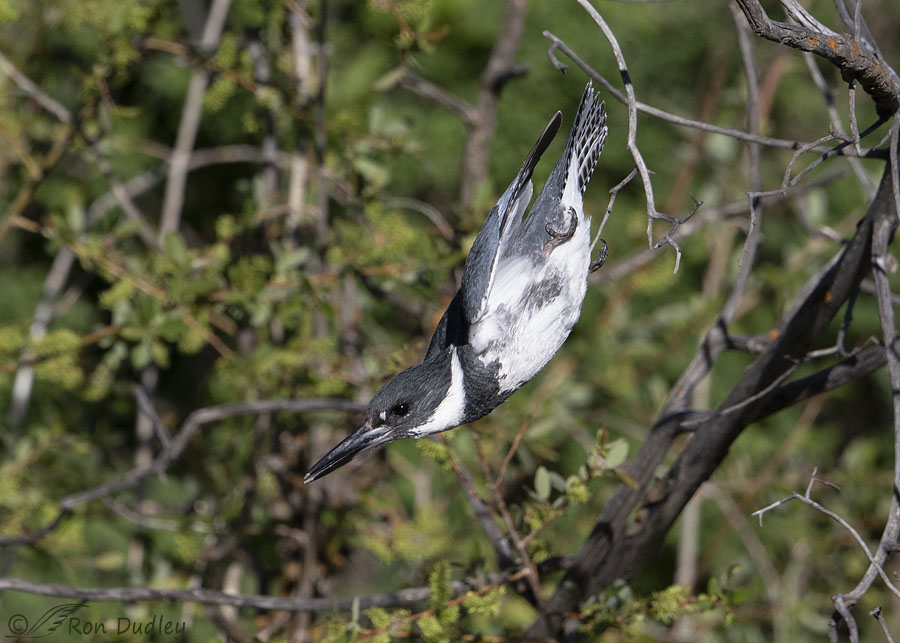
1/4000, f/6.3, ISO 800, Canon 7D Mark II, Canon EF 500mm f/4L IS II USM + EF 1.4 III Extender, not baited, set up or called in
Another dive on a fish, this one without using his wings for the moment.
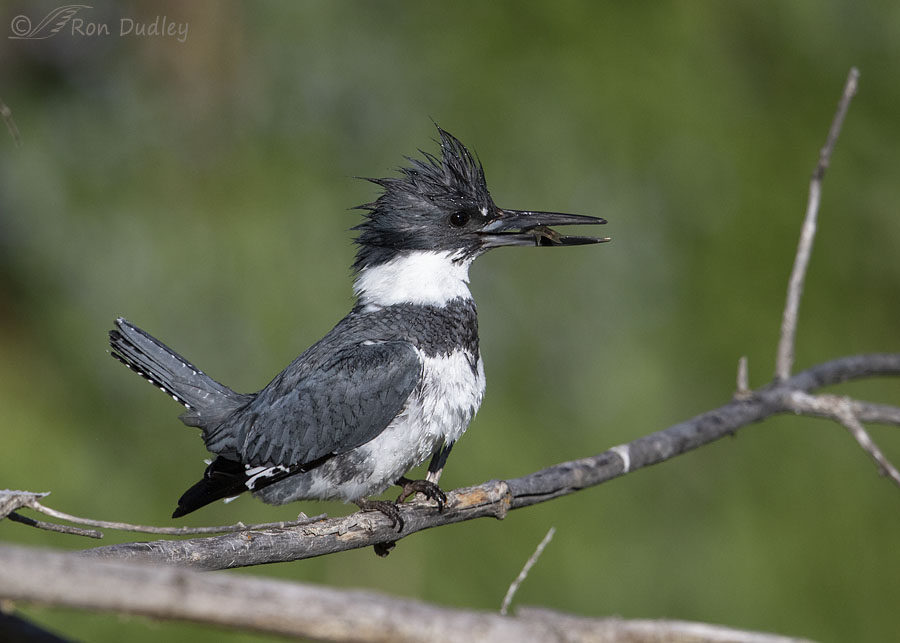
Eventually he caught a fish. It’s small but he seemed proud of it.
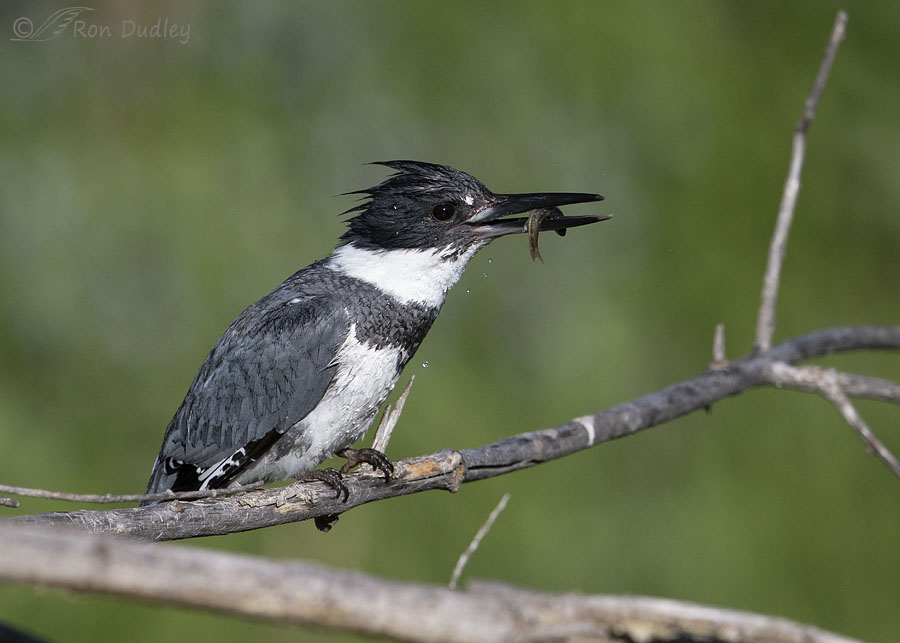
Here the fish is a little easier to see.
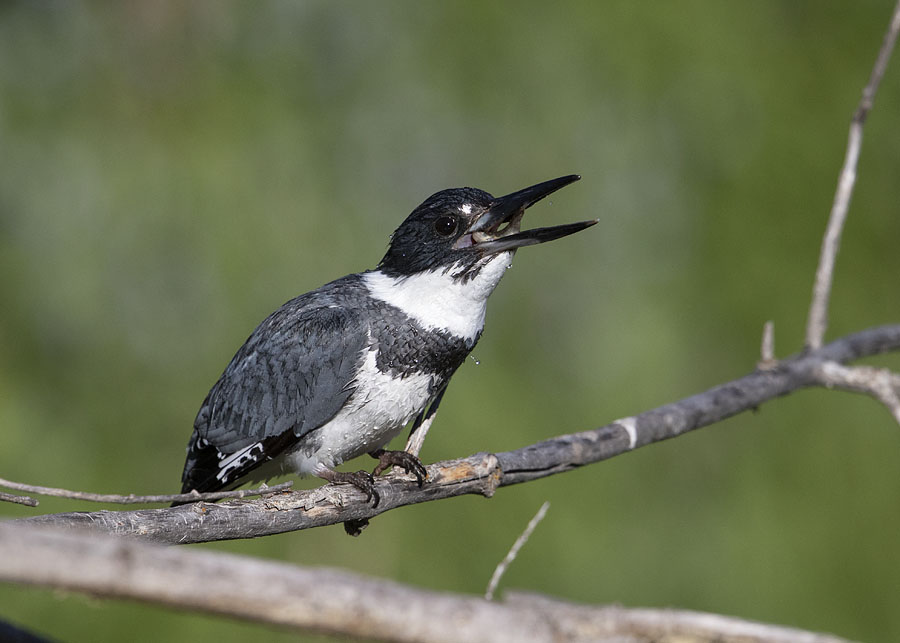
Down the hatch.
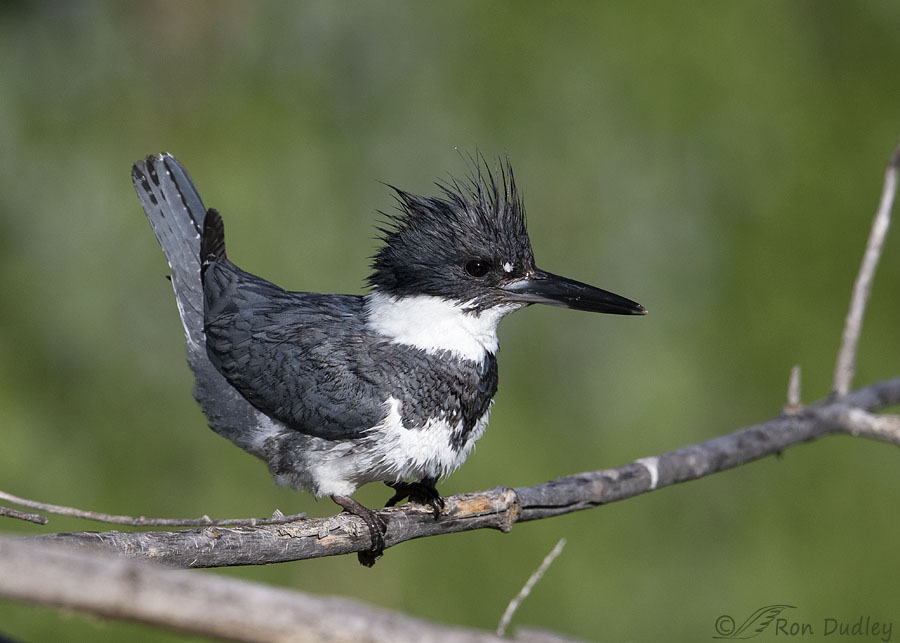
Even kingfishers…
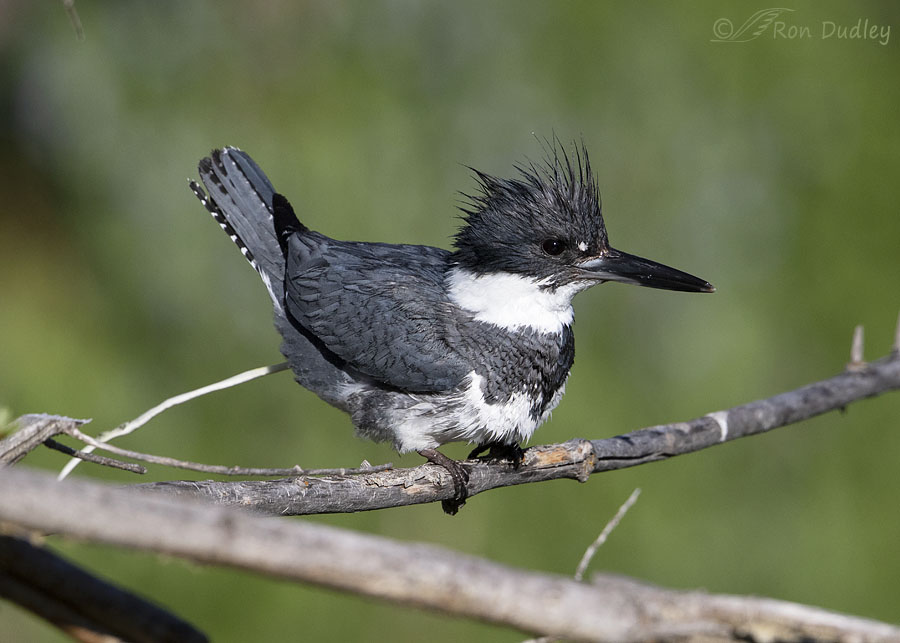
have to poop once in a while.
For many years I considered Belted Kingfishers to be one of my primary nemesis species. I had a few photos of them but nearly all were taken from a distance and few if any were very good. Then perhaps four years ago, for some unknown reason, my fortunes with them changed dramatically for the better.
I can’t explain it but but I’ll take it.
Ron


I loved this post, it was fun and informative. They are so hard to catch in flight, so I particularly enjoyed those!
Good. Thank you, Kellie.
Way to go in kicking your nemesis to the curb.
A truly delightful series.
And no, verbosity has never been one of your problems…
“verbosity has never been one of your problems”
In most situations you’re right, EC. But on my blog I do think I tend to be a bit wordy at times.
Not so but far otherwise.
Maybe you just have an unusually high tolerance for my jabbering… 🙂
Pfffft.
He’s an entertaining subject, but you can tell from the first photo onward that he’s very serious about his business! Great series, Ron … right down to the very last! 😎
Serious about his business indeed, Chris. He was about as focused on his activities as he possibly could be.
Superb series Ron! Thanks for sharing!
Charlotte Norton
Thanks, Charlotte.
Unusual to see the words cooperative and Kingfisher together in a story. I’ve only seen one once, I blinked and it was gone❗️A little bit of everything of each picture.
Have a good day 😁
“Unusual to see the words cooperative and Kingfisher together in a story”
That’s definitely an accurate observation, Diana.
Those exposed legs in the first two photos. They look like normal legs! Lots of interesting stuff in this sequence. Eye catch, as Kathy commented, crest up/crest down, sushi in/sushi out, aerial maneuvers, wing calisthenics.
40 minutes; I’m guessing at least 500 photos.
“I’m guessing at least 500 photos”
Not quite, Lyle. 375 of the kingfisher along with more photos of some other birds. During the time I was with the kingfisher he was too far away for photos for much of the time.
Great series, Ron. 😄 Seem to have “nailed it”, at least with this Kingfisher… What looks like shit for real and the real thing – have to look close to tell the difference. Wonderful to see things I’d never see “just watching”.
2nd Bull Snake in a spruce tree last evening – I KNOW it’s technically a Gopher Snake…😉
Thanks, Judy.
Gopher snake, bull snake, Henry snake, pine snake – all common names for the same snake. To me they’ve always been Gopher Snakes and I’ve always liked them, in part because they have an attitude.
Great series; really like that he is ‘a matter of fact’ little fella. A stretch here, a catch there and a poop when he must. If your going to watch me you get what I give! And you got a catch light in each photo!
“And you got a catch light in each photo”
Thanks for noticing, Kathy. There isn’t much of one in that first diving shot but it’s there.
“how do they learn to compensate for diffraction when diving on a fish?” Those who are not born with the hard wired ability to adjust for the diffraction of water don’t get much to eat. Evolution is a harsh system.
Wonderful photos. I am not bothered by pictures of birds with sticks. Makes them look at home!
Thanks, Porcupine. I wonder if anyone has done any in depth research on whether compensating for diffraction is genetic or learned. Or maybe a little of both.
One of the things I like most about your blog is the frequency with which
you capture tiny visual details, usually hidden from a casual view, like the
small white “tics” lining the far outsides of the Kingfisher’s tail fan–today
is the first time I’ve noticed them–what an attractive accent !
Those “tics” are pretty neat markings aren’t they Kris.
This guy has really been good to you. Excellent series. Recently I have been observing two eagle fledglings go from there to juvenile status and just now looking at these photos made me think what an interesting event to see would be the adult kingfishers teaching their juvenile to dive for fish. I’m thinking that it would be something that would require many tries before perfecting.
“I’m thinking that it would be something that would require many tries before perfecting.”
I agree, Everett. It seems like it would be incredibly difficult. For example, how do they learn to compensate for diffraction when diving on a fish? Until they do it seems like they would always miss the fish by aiming for the wrong place.
Have you had the opportunity to see them teaching the youn? The young are often lined up side by side on a branch above the water. The adult brings a fish and beats it to death on a nearby branch then brings it and shows it to the young. The adult then drops it on the water below and encourages the youngsters to dive for it floating on the surface. Sometimes the adult has to dive down, pick up the fish and repeat the process until the young finally decide to try it for themselves. It doesn’t take them long to get the idea. As for any refraction, at first there is none with the dead fish floating. As they learn to dive, they will do as the adults and dive straight into the water so very little parallax is occuring. An angled dive, like an Osprey, would be a bigger problem. But an Osprey, when first observing the fish, hovers and looks straight down. It’s the herons, striking at an angle that I marvel even more at.
Dan, I think I’ve seen some, only some, of that learning behavior a few times but only from a distance.
Kingfishers around here don’t often dive from a hover. Instead they dive from fishing perches so most of the time they’re entering the water at an angle, sometimes a pretty extreme one.
I’m assuming these are Lynx Lake babies ⁉️ Glad to hear they had a successful season. While visiting Prescott my first step-mom made a point of taking me to the lake. Loved it 😁
She owns the Pleasant Street Guest House❤️
I’ve never heard of Lynx Lake, Diana.
It’s a 55 acre reservoir about 5 miles east of Prescott Arizona. A beautiful area.
I’m in Utah.